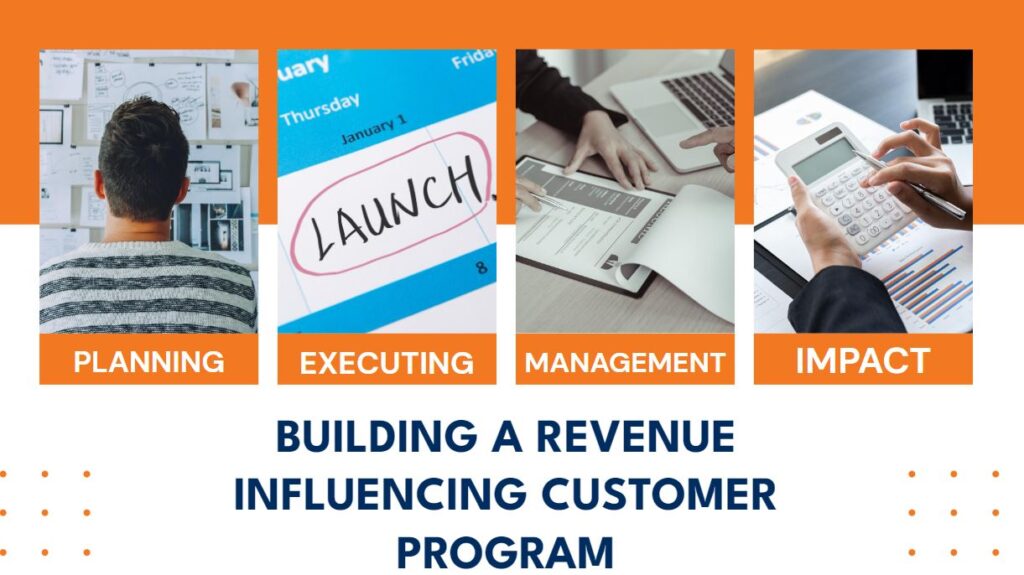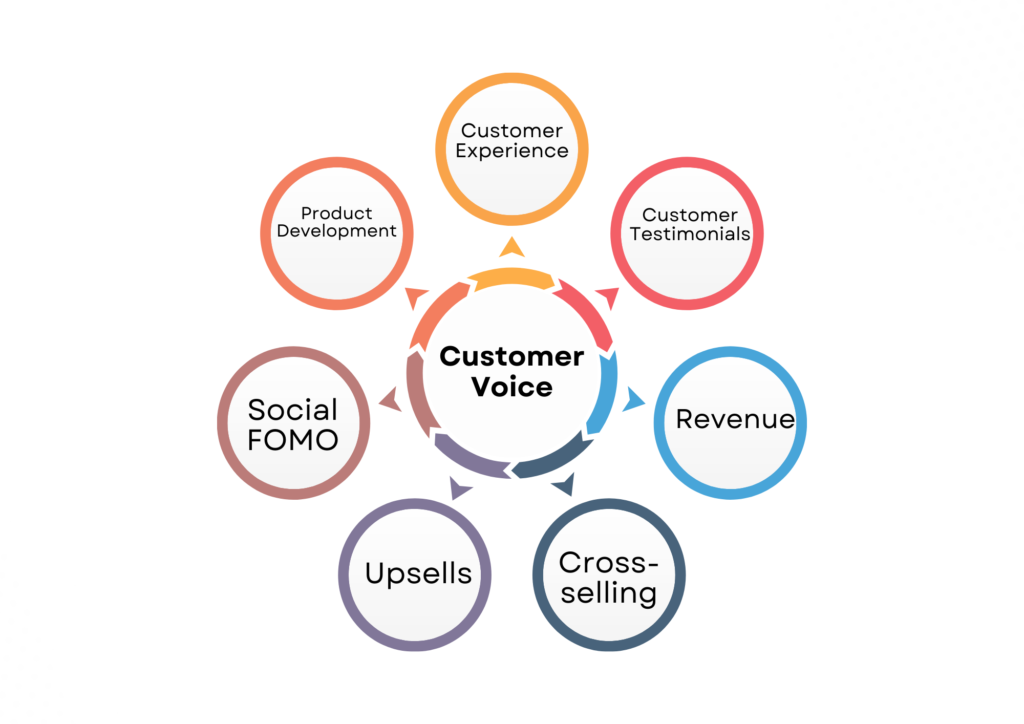Building and nurturing a successful influenced customer program is an effective way to drive growth and establish strong relationships with your customers. By leveraging the power of advocacy, you can tap into the authentic voice of your customers to influence revenue, improve customer experience, and foster long-term loyalty. In this blog post, I’ll share my insights on the key steps involved in creating, managing, and building an influenced customer program that delivers tangible results.
Learn more about the content covered in the Accelerate Webinar series and Watch clips on the 4 steps for building a revenue influenced customer program from the webinar.

Step 1: Customer Program Strategy and Planning:
Start by clearly defining the objectives of building an influenced customer program. Determine the specific goals you want to achieve, such as increasing customer referrals, boosting customer satisfaction scores, or expanding your customer base. Identify the target audience for your program and segment your customer base accordingly.
Collaborate with your sales and customer success teams to identify potential advocates within your customer base. Look for customers who have demonstrated a strong affinity for your brand, are active in providing feedback, or have achieved significant success using your product or service. These advocates can serve as powerful voices for your organization.
Create a structured plan that aligns with your overall business objectives. Outline the activities and resources required, set realistic targets, and establish a timeline for implementation. Consider creating a dedicated team or assigning specific roles and responsibilities to ensure smooth execution of the program.
Step 2: Customer Program Implementation:
Once your strategy is in place, it’s time to implement your influenced customer program. Design a customer invite form that gathers relevant information about potential advocates, such as their level of experience, industry, and specific areas of expertise. This will help you match advocates with appropriate opportunities for engagement.
Craft an engaging email to invite customers to join your program. Highlight the benefits they’ll receive, such as exclusive access to new product releases, networking opportunities with other industry leaders, or the chance to be featured in case studies or speaking engagements. Personalize the invitation to make it more compelling and show that you value their participation.
Collaborate with your sales or customer success team to facilitate the nomination process. Make it easy for customers to nominate themselves or others as advocates, and provide clear instructions on how to do so. Consider offering incentives, such as discounts or rewards, to encourage participation.
Train your internal sales team on the program’s purpose, benefits, and processes. Equip them with the knowledge and tools to identify potential advocates during customer interactions and encourage their participation. This alignment will ensure a seamless experience for both advocates and your organization.
Create a content calendar with various engagement opportunities for advocates. This could include webinars, industry events, customer advisory boards, or exclusive beta testing programs. Regularly communicate with advocates, providing updates on upcoming activities and opportunities for them to volunteer and contribute their insights and expertise.

Step 3: Customer Program Management:
Active management is crucial to the success of your influenced customer program. Regularly engage with advocates to maintain their interest and enthusiasm. Show appreciation for their contributions by acknowledging them publicly, featuring their success stories, or highlighting their expertise in your marketing materials.
Create a sense of community by providing exclusive platforms for advocates to connect and network with one another. Consider setting up a private Slack group or a community portal where they can share experiences, best practices, and industry insights. This fosters a supportive environment and encourages collaboration among advocates.
Keep advocates informed about upcoming activities, new initiatives, and relevant industry news. This ensures they remain engaged and continue to feel valued as members of the program. Actively seek their feedback on program activities, and be open to their suggestions for improvement.
Conduct periodic evaluations of the program’s effectiveness. Measure the engagement levels of advocates, track the number of referrals generated, and quantify the revenue influenced by customer advocacy efforts. Use this data to identify trends, recognize top-performing advocates, and refine your program strategy as needed.
Step 4: Know Your Numbers for your Customer Program:
Accurate measurement and analysis are essential for demonstrating the value and impact of your influenced customer program. Track and report on key metrics such as the number of advocates, engagement levels, and revenue influenced by customer advocacy. Use this data to create reports and dashboards that showcase the program’s impact on key business outcomes.
Leverage customer voice assets, such as testimonials, case studies, and customer quotes, to enhance your go-to-market initiatives. Incorporate these assets into your marketing materials, website, and sales presentations to build credibility and trust with prospective customers.
Measure the impact of advocacy efforts on sales win rates, customer retention rates, and campaign responses. Identify any patterns or correlations between advocacy activities and positive business outcomes. Share this feedback internally with product, marketing, and sales teams to drive continuous improvement and better align your organization with customer needs. Measuring the impact of customer voice is key as described here are a few examples of ideal ways to use customer voice at each stage, and how you can measure the impact it has.
Conclusion:
Building an influenced customer program requires on going management, a customer-centric approach, prioritizing customer experience and relationship-building over product-centric sales pitches. By leveraging the power of customer advocacy, you can foster strong relationships, drive revenue growth, and differentiate your organization from competitors.
Remember to continually adapt and evolve your program to align with changing customer needs and strategic growth initiatives. Through effective program management, consistent engagement, and a focus on data-driven insights, you can demonstrate the tangible impact of your influenced customer program and solidify its position as a valuable asset for your organization.